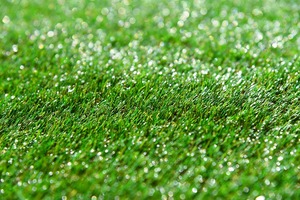Should You Be Installing Fake Grass By Yourself?
Corps
Should You Be Installing Fake Grass By Yourself?
Installing artificial grass can be a rewarding DIY project, but it’s important to assess whether it’s the right choice for you. While the idea of saving on installation costs can be appealing, there are several factors to consider before deciding to tackle the project on your own. Here’s a guide to help you determine if DIY artificial grass installation is suitable for you or if professional help might be a better option.
Assessing Your Skills and Tools
Skill Level: Installing artificial grass requires a certain level of skill and knowledge. You’ll need to be comfortable with measuring, cutting, and securing the turf, as well as preparing the site properly. If you have previous experience with similar DIY projects, you may find the installation process manageable.
Tools and Equipment: Successful installation also depends on having the right tools. Essential tools include a sharp utility knife, a plate compactor for the base layer, landscape staples or nails, and a stiff-bristle broom for brushing the turf. If you don’t already own these tools or aren’t willing to invest in them, professional fake grass installation might be a more practical option.
Understanding the Installation Process
Preparation: Proper preparation is crucial for a successful installation. This includes clearing the area, laying down a weed barrier, and creating a stable base layer. Each step must be completed accurately to ensure the turf performs well and looks natural.
Seaming and Securing: Joining multiple pieces of artificial grass and securing the edges requires precision. Mistakes in seaming or securing the turf can lead to visible joints, gaps, or shifting. Professionals are experienced in handling these aspects to achieve a seamless finish.
Evaluating Time and Effort
Time Commitment: Installing artificial grass can be time-consuming, especially if you’re new to the process. Preparing the site, laying the base, and installing the turf can take several days, depending on the size of the area and your level of expertise. Consider whether you have the time to dedicate to the project.
Effort Required: The installation process can be physically demanding. Tasks such as digging, lifting heavy materials, and compacting the base require significant effort. If you’re not up for the physical challenge, hiring professionals might be a better choice.
Considering Potential Challenges
Dealing with Issues: During installation, you may encounter unexpected challenges, such as uneven surfaces or drainage problems. Addressing these issues requires problem-solving skills and experience. Professionals are adept at handling such challenges and can ensure that the installation proceeds smoothly.
Ensuring Quality: A well-executed installation is key to the longevity and performance of your artificial grass. Professional installers have the expertise to ensure that the turf is laid correctly, avoiding common pitfalls that can affect the appearance and functionality of your lawn.
The Cost Factor
Cost Savings: DIY installation can save you money on labour costs, but it’s important to weigh this against the potential cost of mistakes. Incorrect installation can lead to issues that may require costly repairs or a complete reinstallation.
Professional Services: While professional installation involves an upfront cost, it often comes with the benefit of a warranty and expert workmanship. Professionals can also provide valuable advice and support, ensuring a high-quality result.
Conclusion
Deciding whether to install artificial grass yourself or hire a professional depends on your skills, tools, time availability, and willingness to tackle the project. If you’re confident in your DIY abilities and prepared for the effort involved, you may find the project manageable and cost-effective. However, if you prefer a hassle-free installation with guaranteed results, enlisting the help of professionals like Eco Lawn can ensure a seamless and high-quality finish.
Consider your own circumstances carefully to make the best decision for your artificial grass installation. If you choose to go the DIY route, be sure to follow all guidelines and take your time to achieve the best possible outcome.













commentaires